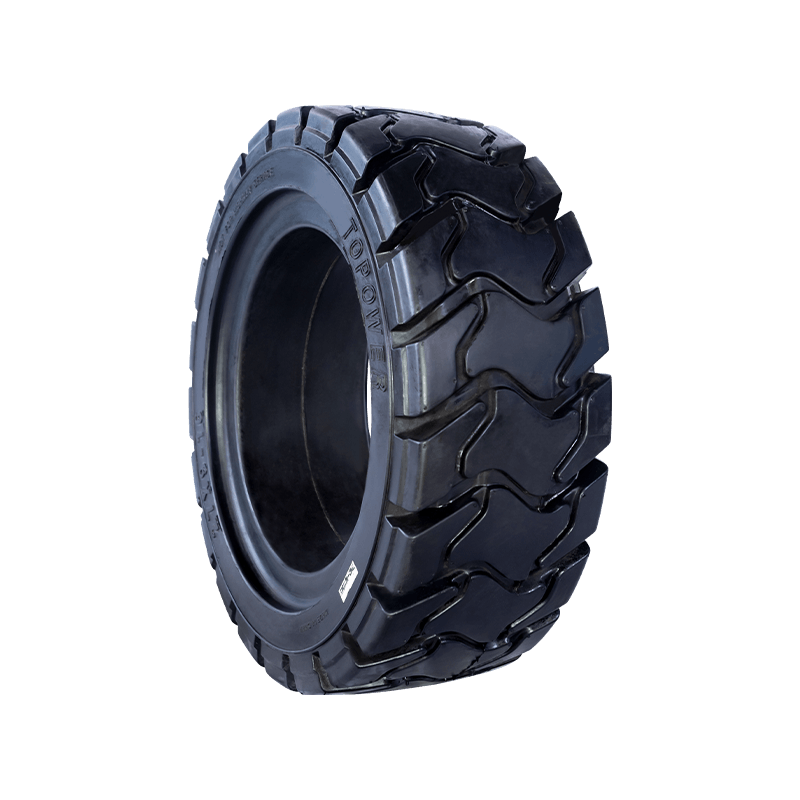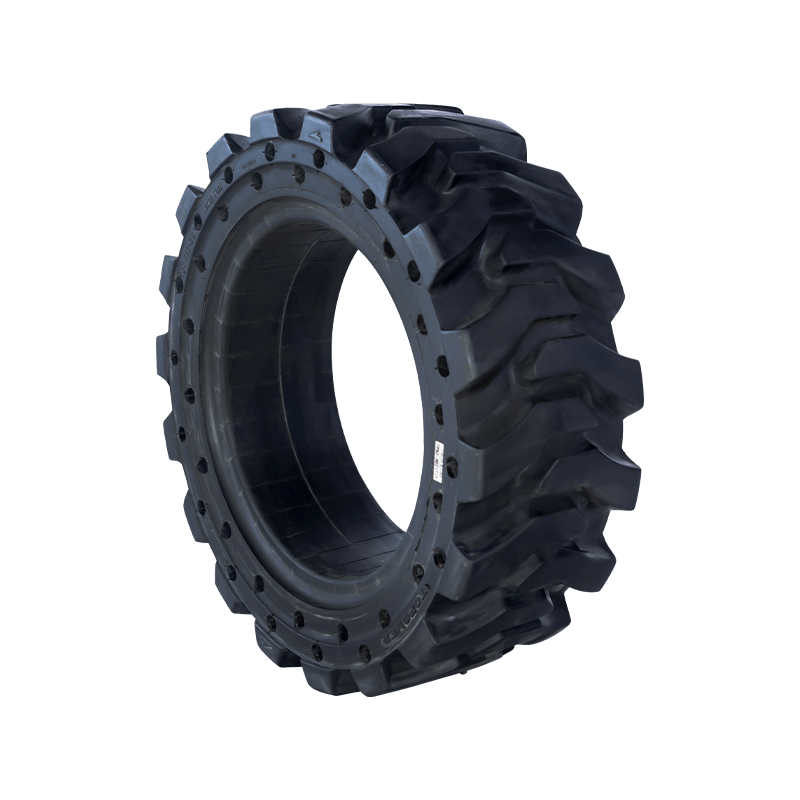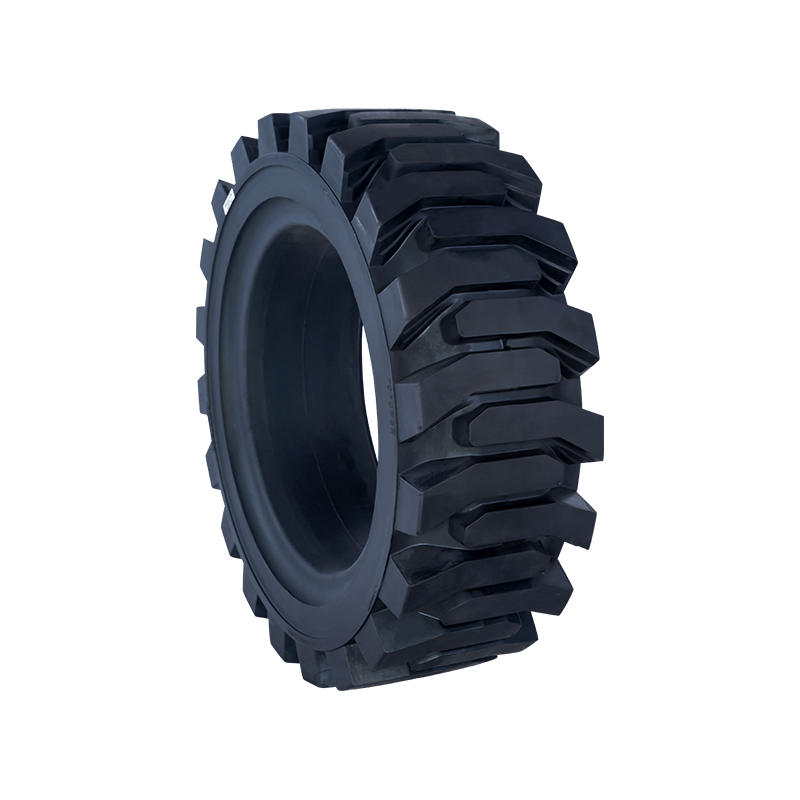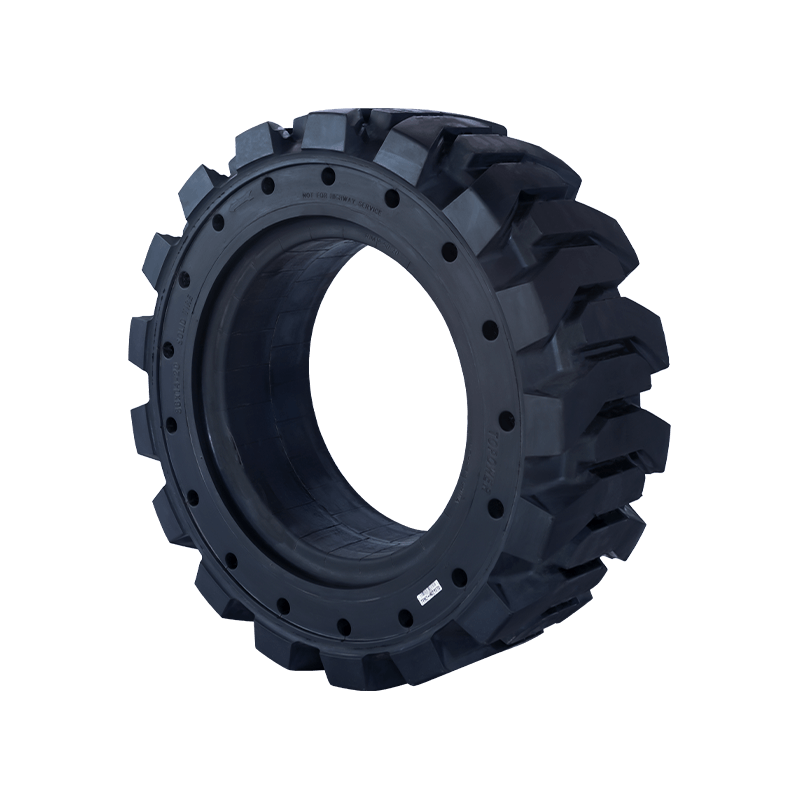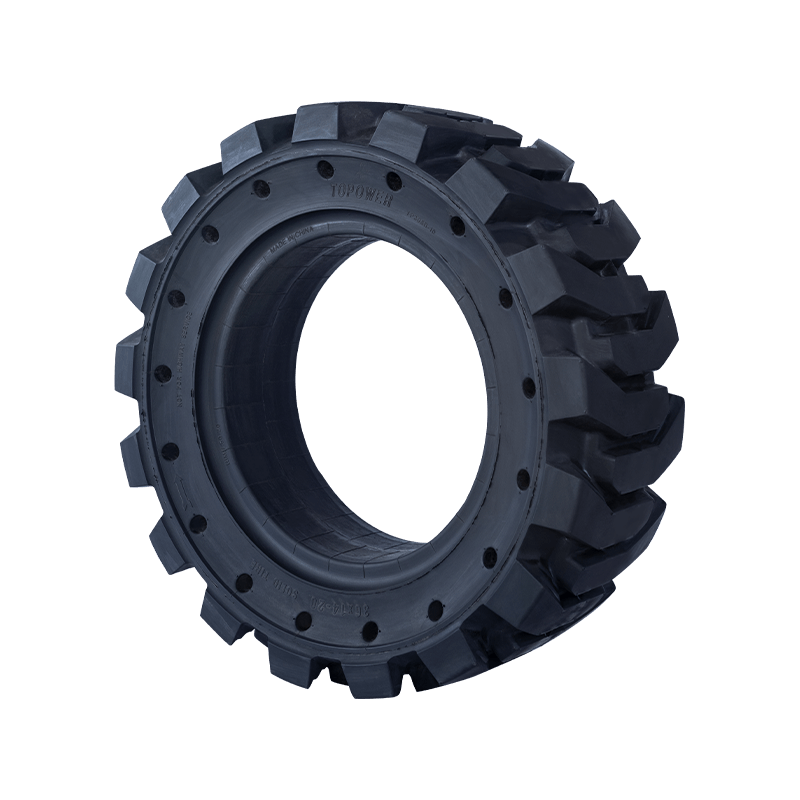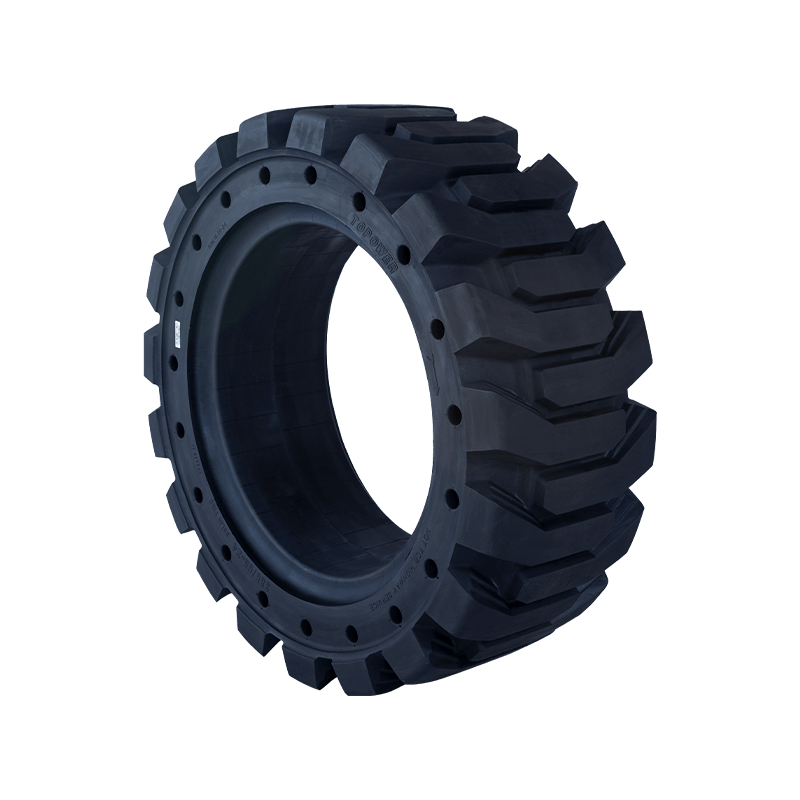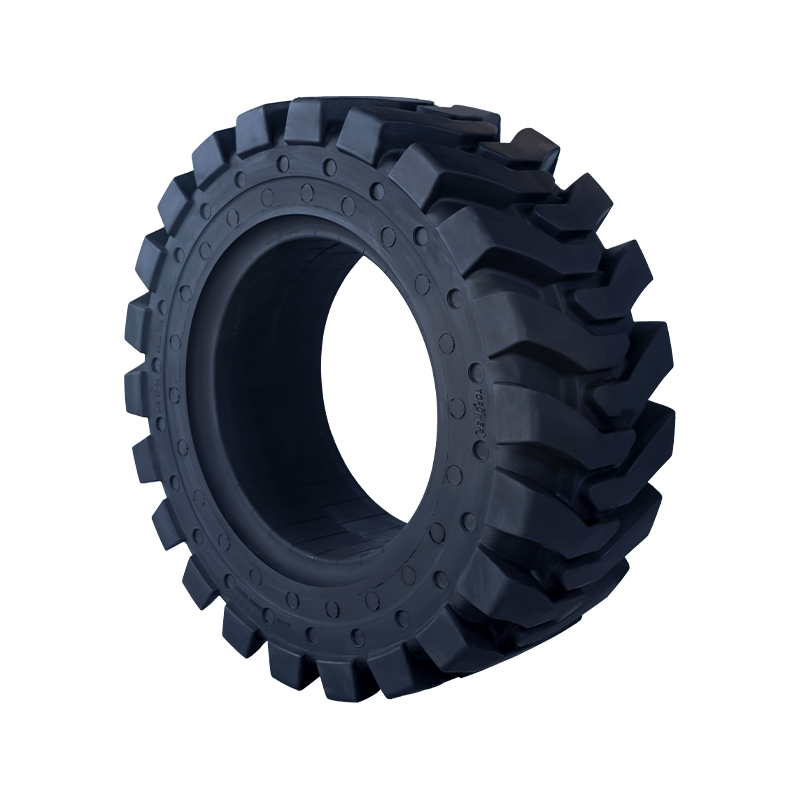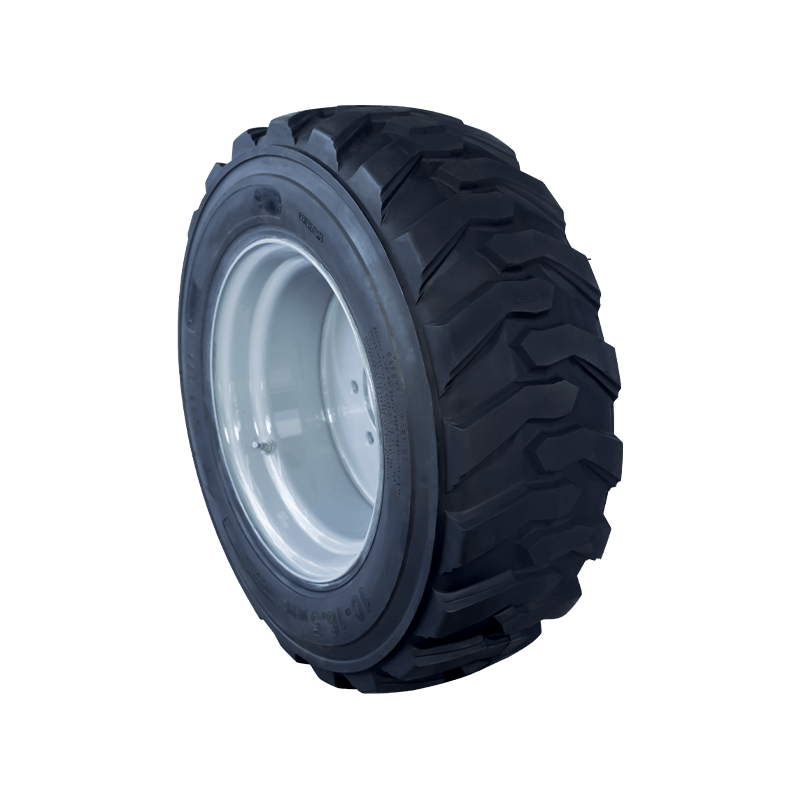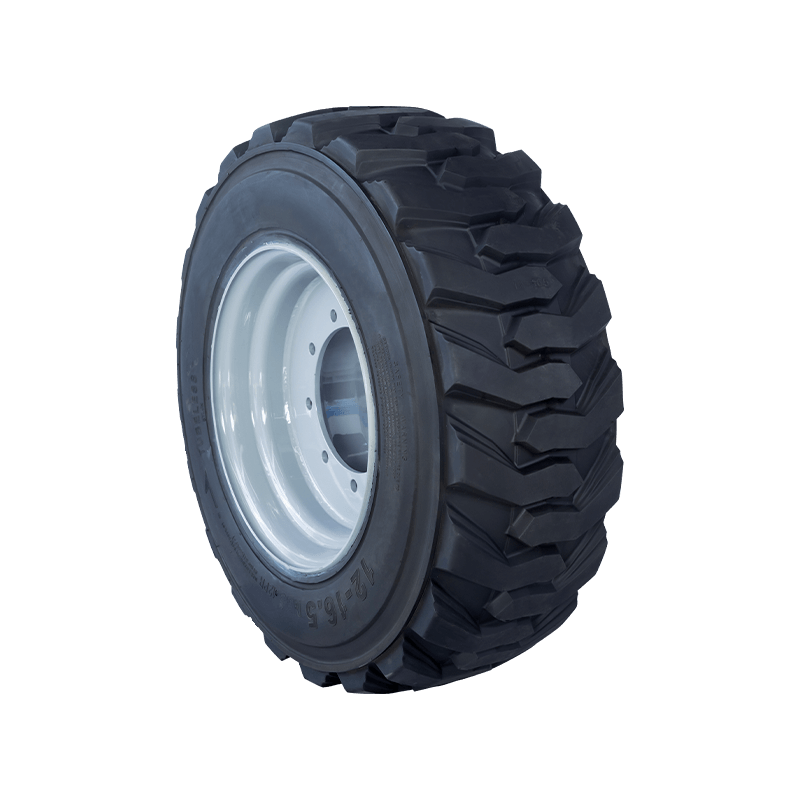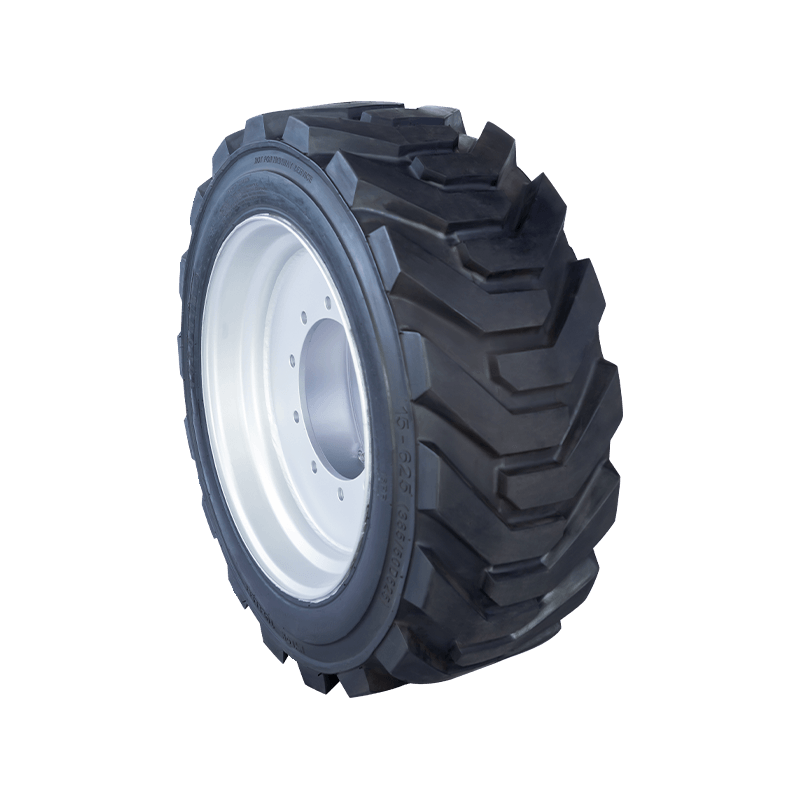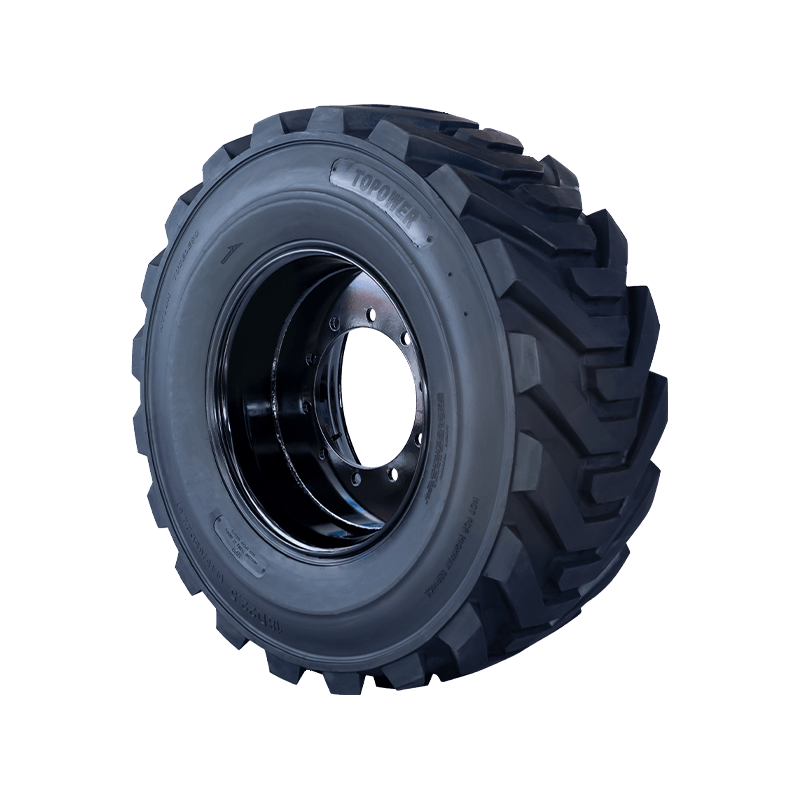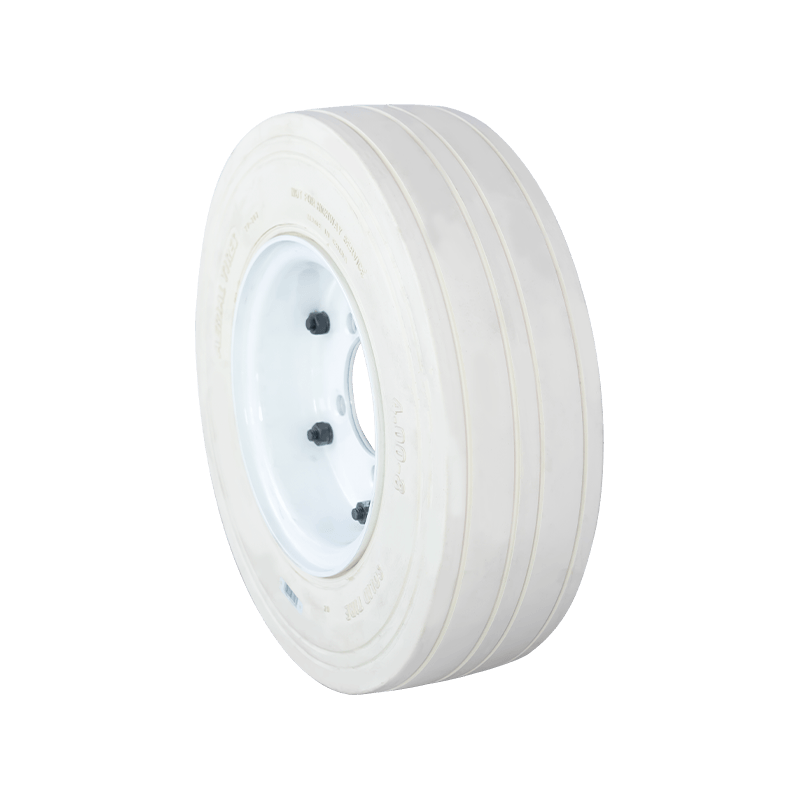What are PU foam-filled tires?
PU foam-filled tires are a semi-solid tire structure that fills the inner cavity of a traditional pneumatic tire with polyurethane foam material. The overall tire consists of three parts:
Tire: The outer structure of the PU foam-filled tire is made of high-strength industrial-grade rubber material, which has excellent wear resistance and good grip. This rubber formula is usually specially formulated to cope with harsh usage scenarios such as heavy loads, frequent steering, and continuous high-intensity operations. Whether on smooth concrete floors, rough asphalt roads, or complex construction site gravel environments, the tire can ensure that the vehicle has good stability and traction, improving overall operating efficiency and safety factors. In addition, the tire pattern design has also been optimized, and a variety of tread patterns can be selected according to the usage scenario, such as anti-slip, heavy-load, or silent, to further enhance the tire's adaptability to different road conditions.
Rim: The rim is an important load-bearing structure of PU foam-filled tires. It is usually made of high-strength carbon steel or alloy steel and has strong load-bearing capacity and anti-deformation ability. It not only supports the entire tire structure, but also connects to the vehicle transmission system through the wheel hub, and undertakes the key functions of transmitting torque, supporting loads and maintaining tire positioning. High-quality rims can effectively prevent shaking and offset during operation, ensuring smooth operation of the tire, and are particularly suitable for use in high-altitude platform equipment that is frequently lifted and moved. At the same time, the surface of some high-end rims is treated with anti-corrosion coatings, which can be used for a long time in humid and corrosive environments, extending the life of the entire wheel system.
Polyurethane foam filling layer: The polyurethane foam filling layer is the core technology of PU filled tires. This part is made of high-density, high-resilience polyurethane material injected into the inner cavity of a traditional pneumatic tire, and after curing, it forms an elastic support system similar to a solid structure. Compared with a completely solid tire, this foam filling structure has both elasticity and rigidity, which can not only maintain the shape unchanged and prevent the tire from collapsing, but also provide a cushioning and shock-absorbing effect close to that of a pneumatic tire. Polyurethane itself has extremely high tear resistance, aging resistance, oil resistance and corrosion resistance, ensuring that the filling layer remains stable and reliable in high-frequency operations and environments with large temperature differences. At the same time, the filling layer does not require maintenance and is not afraid of puncture. Even if sharp objects are pierced, there will be no leakage or blowout, which greatly improves the continuity and safety of equipment operation.
What are the core performance advantages?
Strong anti-puncture ability and safer operation: Once traditional pneumatic tires encounter sharp objects such as nails and gravel, they are prone to leakage or even blowout, which not only affects the progress of the operation, but also may cause safety hazards. The PU filling material has extremely high puncture resistance and structural stability. Even when working under complex road conditions, there is no need to worry about sudden leakage, which greatly improves the safety of the aerial work platform.
Excellent elasticity, strong shock absorption, and good driving experience: Thanks to the unique characteristics of polyurethane foam, this type of tire retains the durability advantage of solid tires and has a buffering effect close to that of pneumatic tires. It can effectively absorb road impact and vibration, thereby reducing the fatigue of operators and improving vehicle passability and operation stability.
Low maintenance cost and long service life: PU foam-filled tires have a stable structure, no need to check tire pressure regularly, and are not prone to traditional faults such as "bulges" and "flat tires". The maintenance-free design greatly reduces operating and maintenance costs. At the same time, its excellent wear resistance and aging resistance ensure that the tires maintain stable performance under long-term and high-frequency operations, significantly extending the replacement cycle.
Strong adaptability and customizable treads: According to different operating environments and needs, PU tires can provide two types of material options: black wear-resistant type and environmentally friendly non-marking type. Among them, black tires are suitable for outdoor heavy-load conditions, while environmentally friendly types are more suitable for indoor floors (such as warehouses and exhibition halls) to avoid ground pollution.
In what scenarios can they play a huge role?
PU foam-filled tires are currently mainly used in the following equipment and scenarios:
| Application Equipment | Application Scenarios | Tire Advantages |
|---|---|---|
| Articulated Boom Lift | Complex construction sites, warehouse rack maintenance, exterior building operations | Puncture-resistant, low risk of damage from debris, high stability |
| Telescopic Boom Lift | Outdoor aerial work, billboard installation, steel structure welding | High load-bearing capacity, excellent wear resistance, adaptable to rough terrain |
| Electric/Internal Combustion Scissor Lift | Indoor factory operations, equipment maintenance, exhibition booth setup | Eco-friendly and non-marking, floor-safe, low noise operation |
| Construction Transport Vehicles / Utility Carts | Construction site logistics, roadwork support | Durable and long-lasting, reduced replacement frequency, low operating costs |
Its application in various aerial work platforms and engineering equipment not only solves the problems of easy wear and frequent maintenance of traditional tires, but also provides solid support for improving equipment operation efficiency and safety.

 English
English русский
русский Español
Español عربى
عربى


